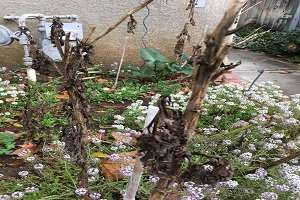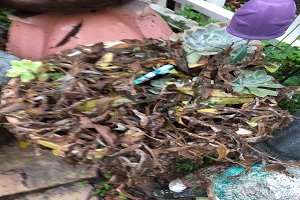By Sharon L. Rico
What is a frost? 32 degrees or lower; a hard freeze is 28 degrees or lower, when cold air is blown in from somewhere else (like the Artic). Fruit such as oranges and lemons can freeze and dry out, making the fruit inedible.
Keep plants in ground and in containers well-watered. Moist soil holds more heat than dry soil and keeps the humidity level higher helping protect against frost burn (moisture being pulled from foliage).
Wrap trunks of tender and young trees (especially citrus) for frost protection. Cover tropical plants, succulents and young citrus plants and tender perennials with frost cloth, old sheets or large cardboard boxes. Cover before sunset to help retain any ground heat. Covering should go all the way to the ground and held away from contact with the plant. Mature, established trees will usually survive the freeze.
You can string incandescent holiday lights (NOT LED LIGHTS), through trees and under coverings for extra warmth. Old Christmas lights work well and can be found in thrift shops.
Place frost sensitive plants in containers so they can be moved to shelter or plant near SOUTH or WEST facing walls for reflective warmth. Small portable plastic covered greenhouses can be purchased for little cost and will hold a multitude of smaller containers. This is how I protect my succulent collection and Staghorn fern.
Using anti-transpirant spray available at most garden centers is another way to save your plants. This non-toxic polymer spray works on most plants except those with hairy leaves. It forms a thin film that allows plants to breathe but reduces water loss. This spray protects plants from wind, frost, and heat. Also, helps with transplant shock.
Freeze damage can be anything from fruit & leaf damage to the complete death of plants. Don't rush to prune plants with frost damage. Be patient, the plants may recover. Check for green growth as late as May or June.
Companion planting like Lantana and Ceanothus (California Lilac) may save your Lantana. Bougainvillea will survive in containers if sheltered. If using frost covers at night, remove during the day and replace at night. Wrap frost cloth around hanging plants too large to move, using clothes pins to secure edges. The longer the frost, the more damage caused to your plants. Be diligent to protect your garden investments.


Source: ucanr.edu